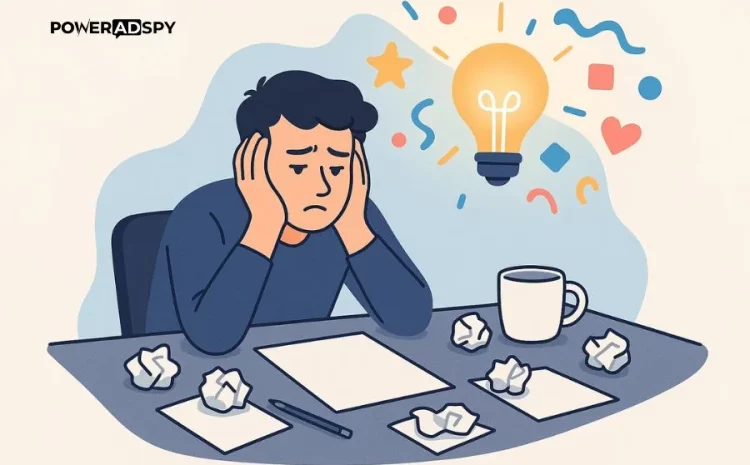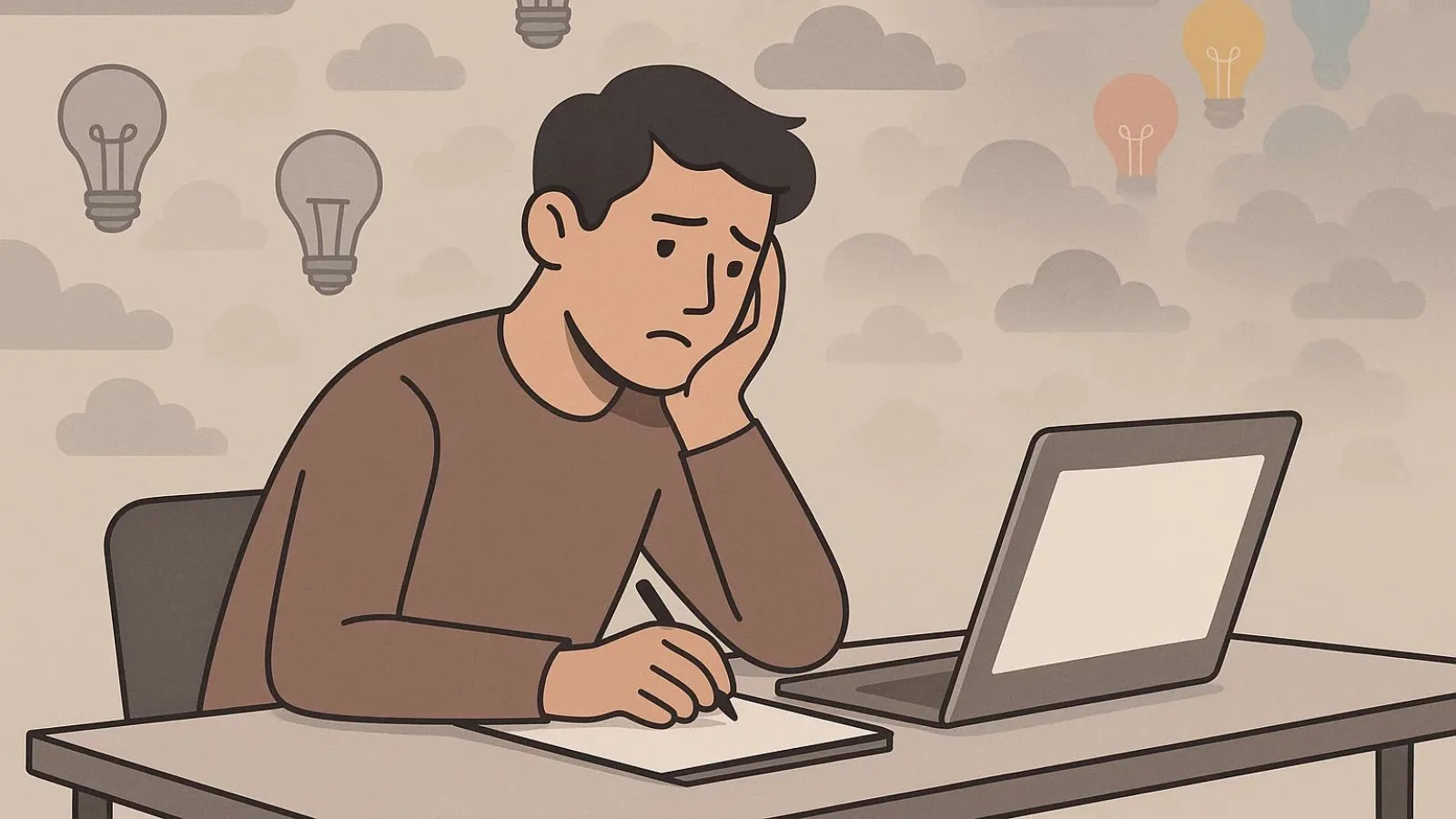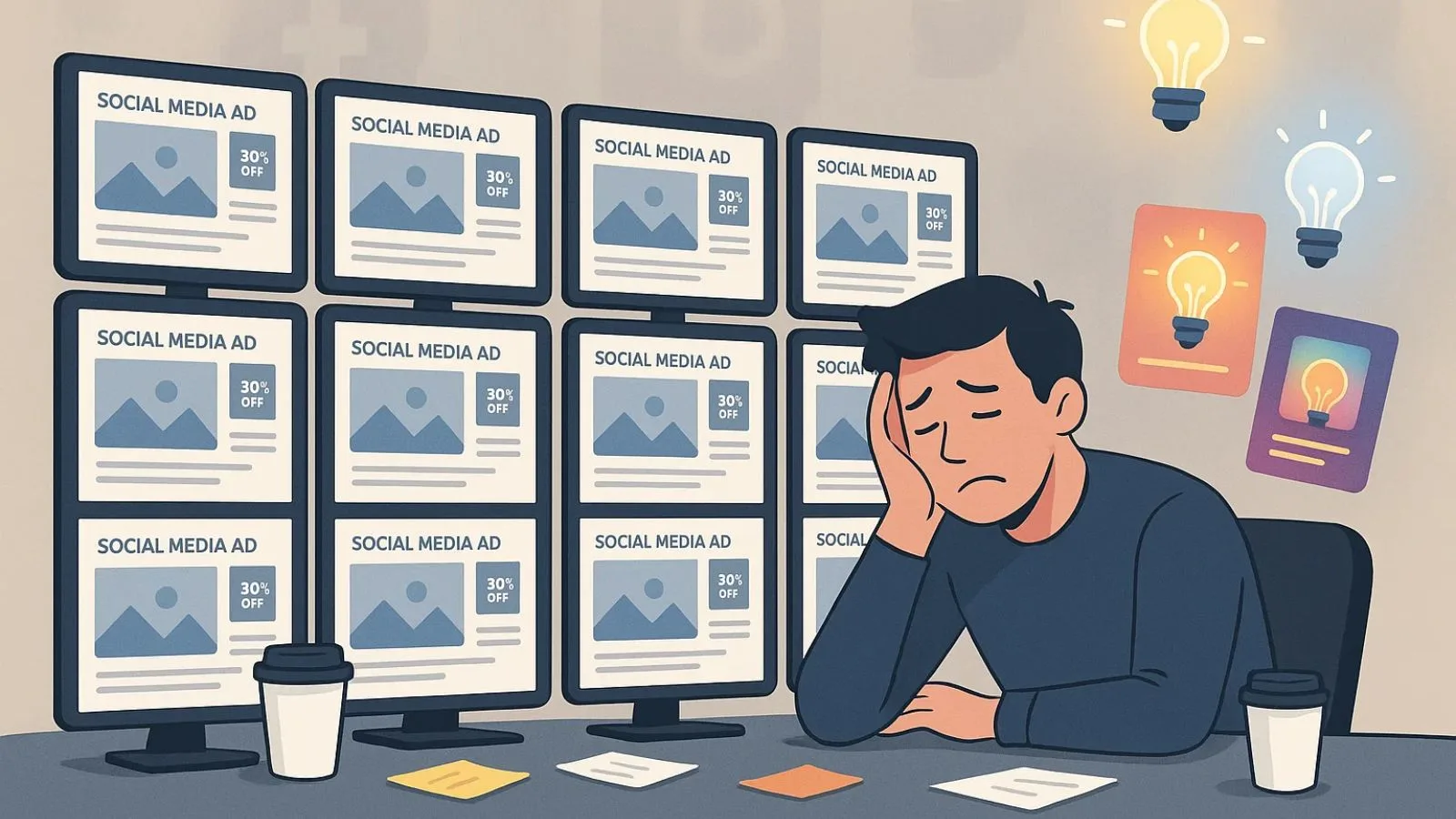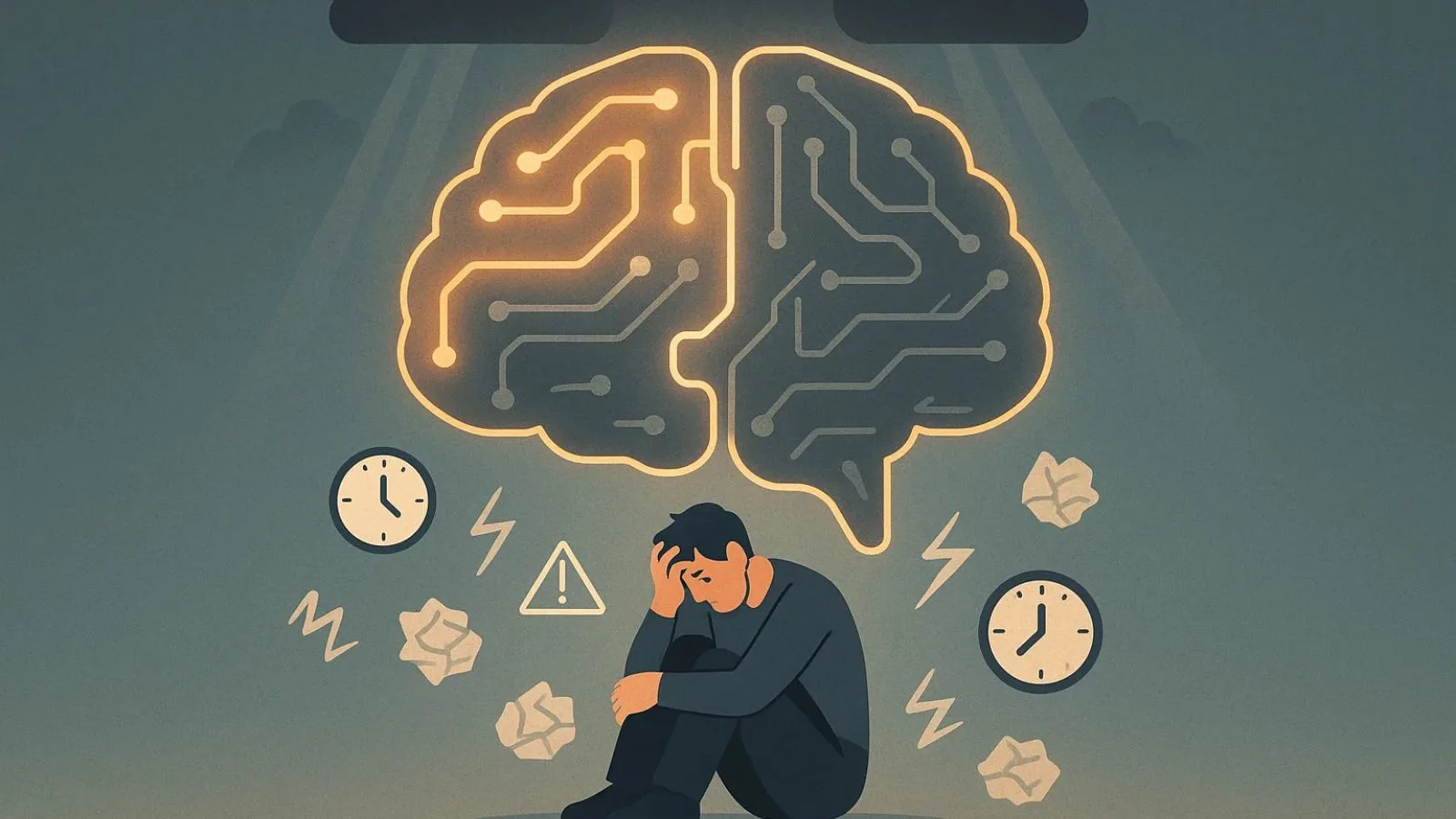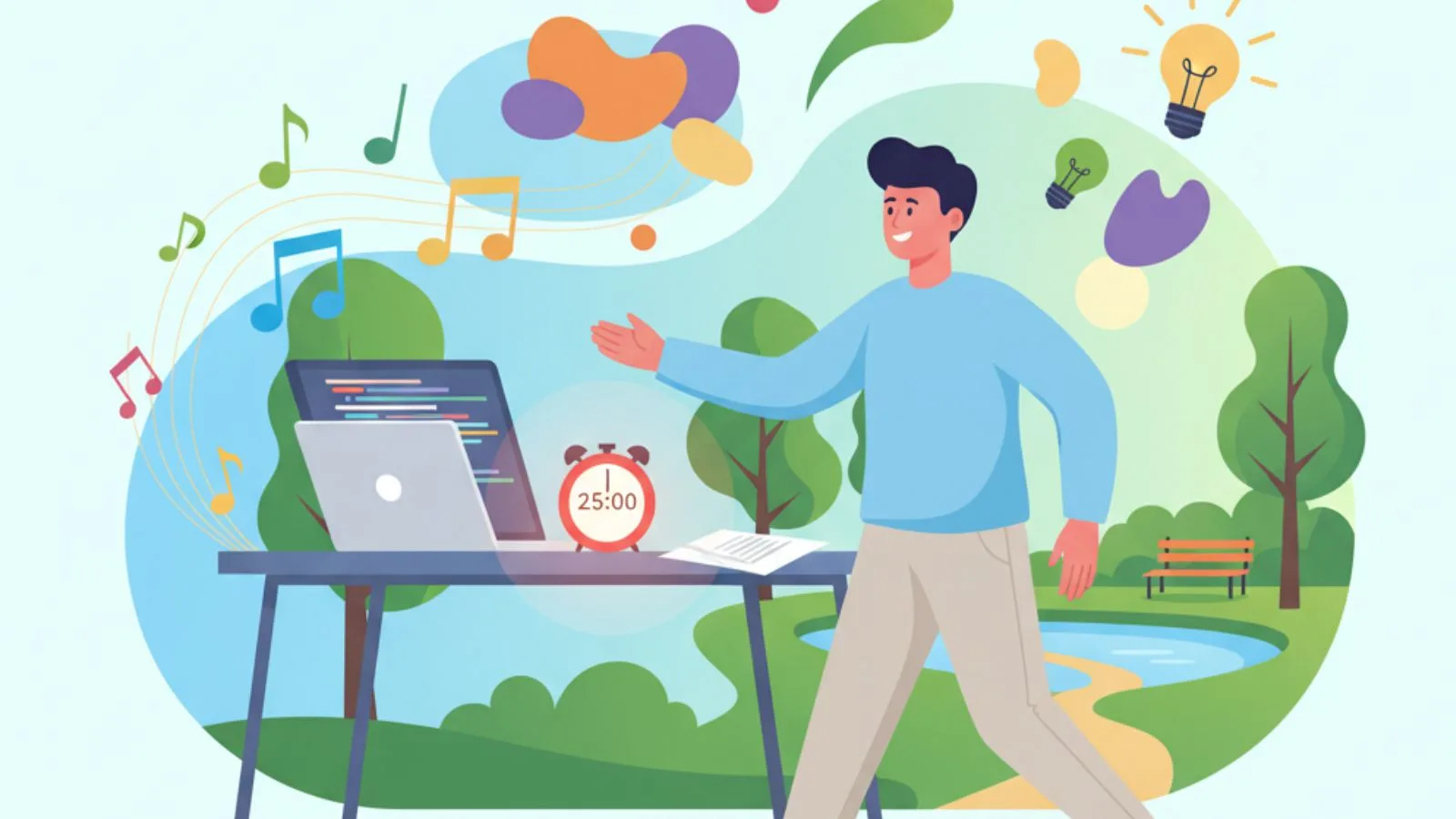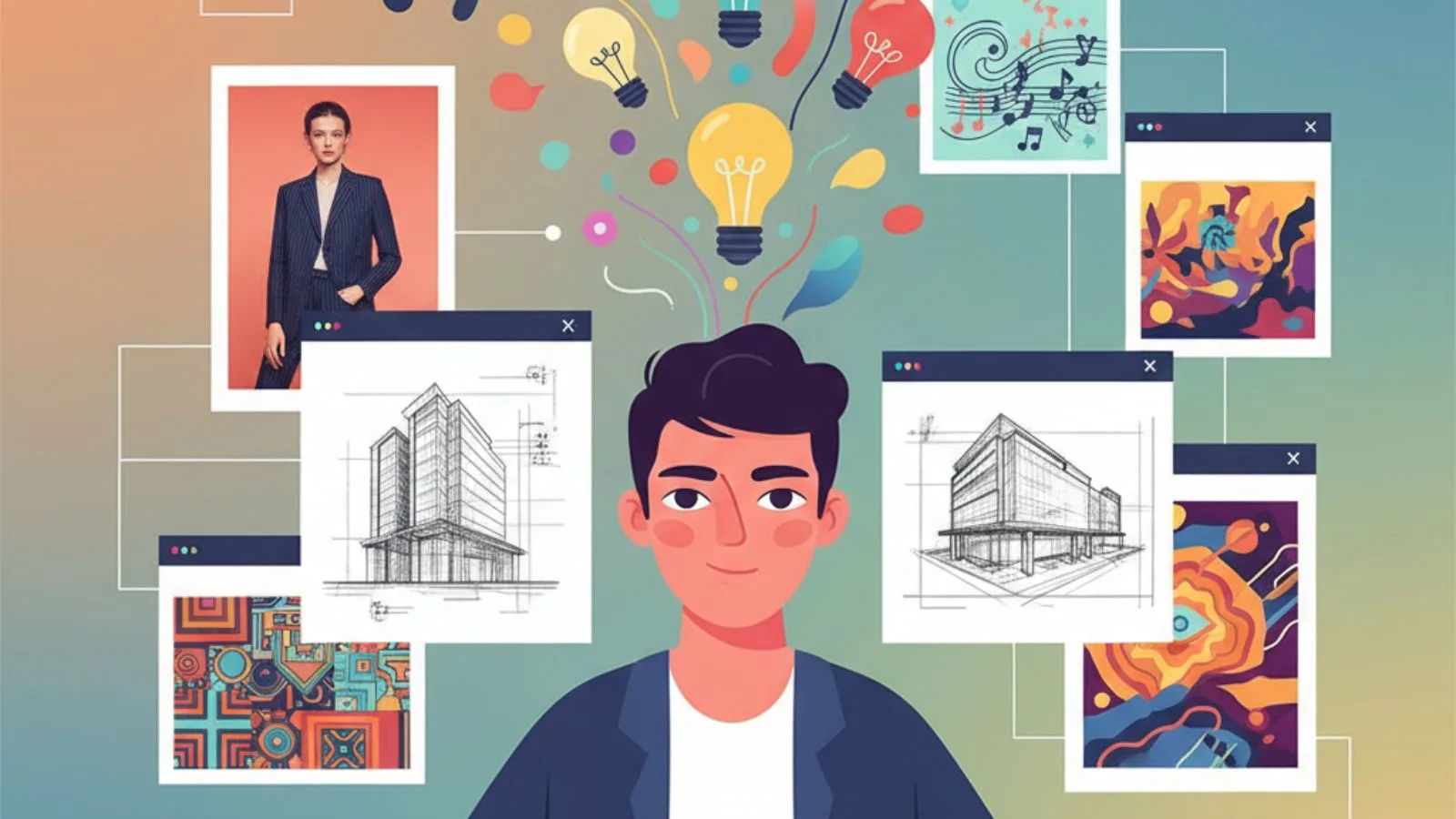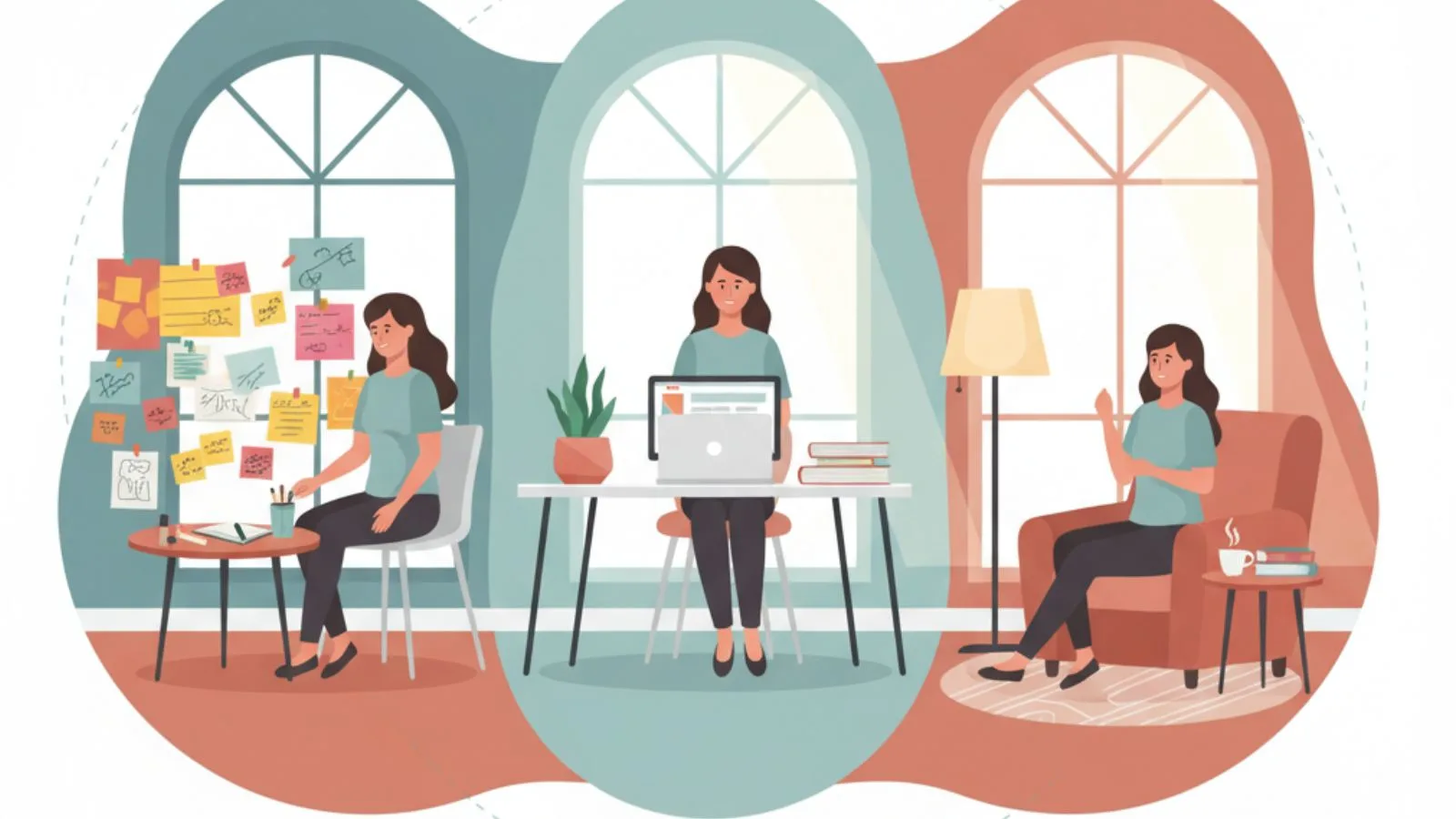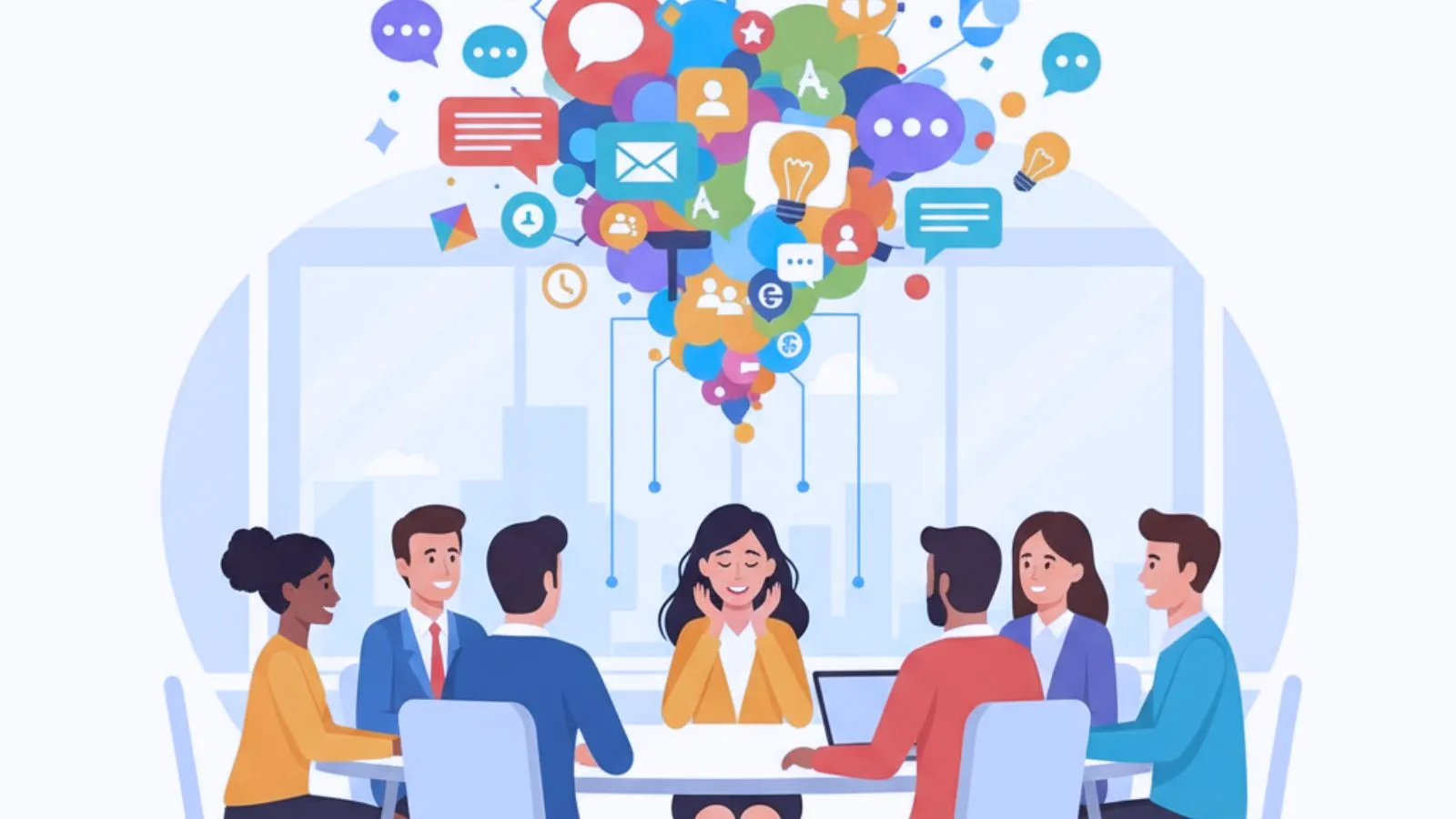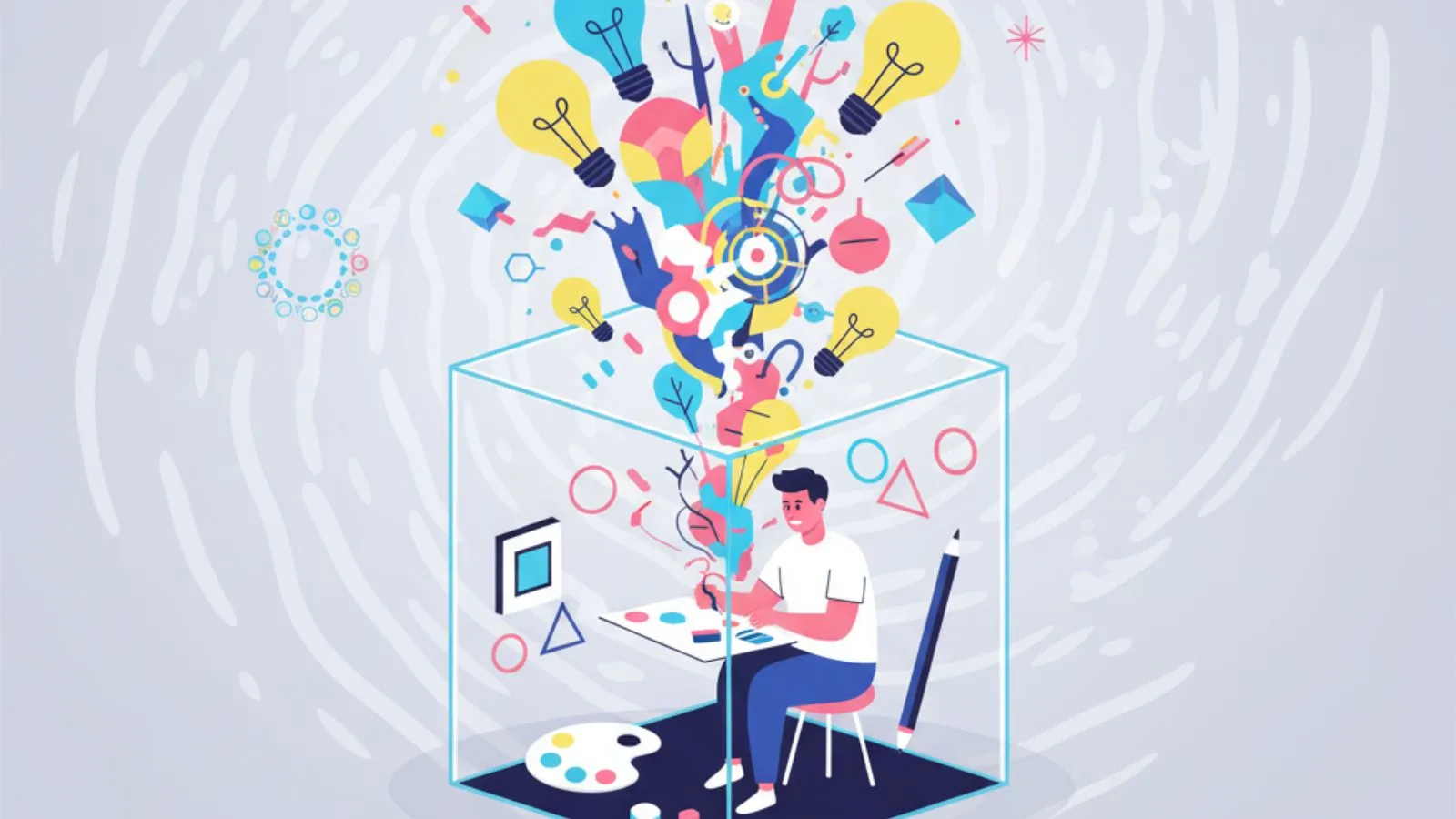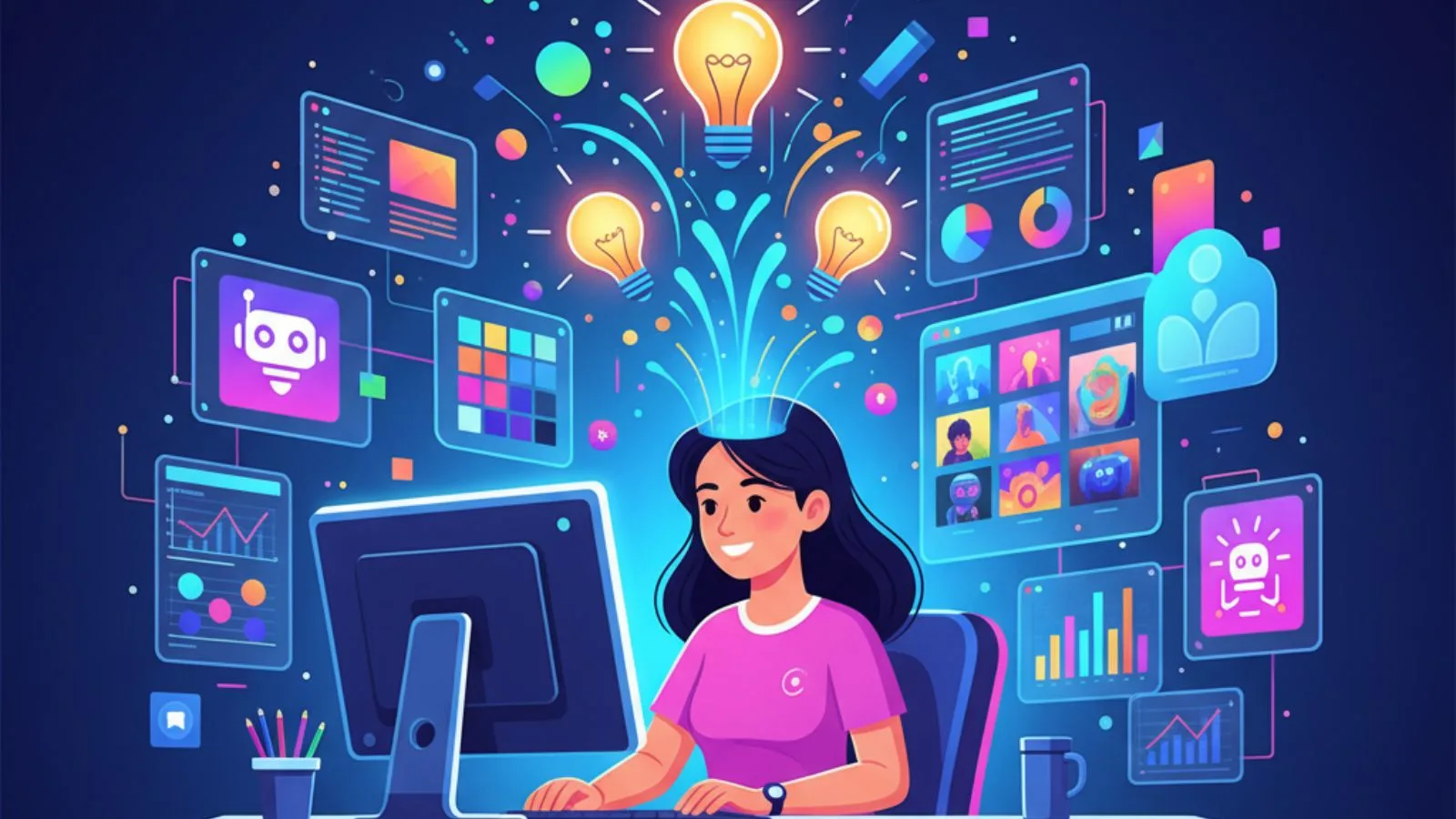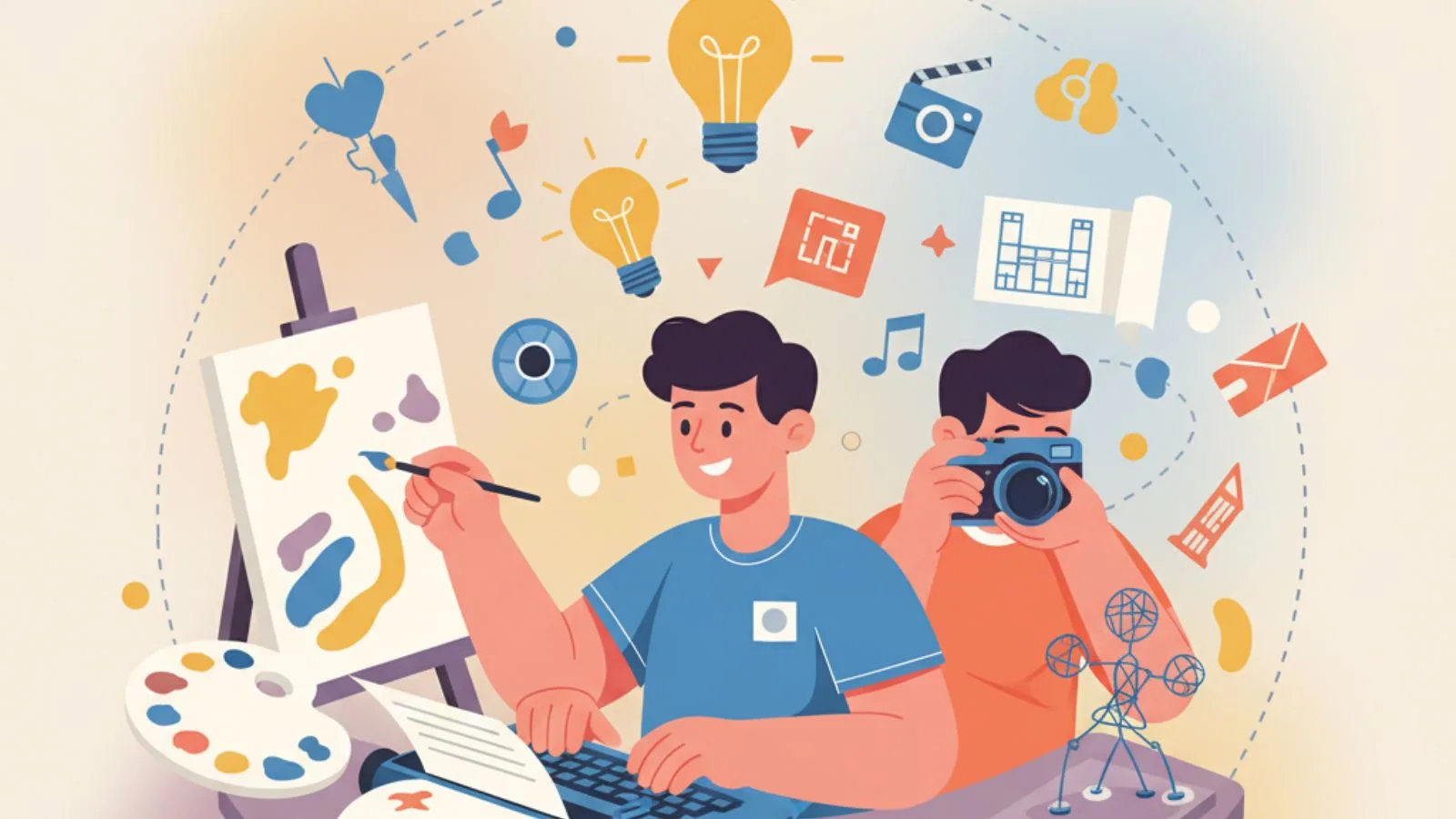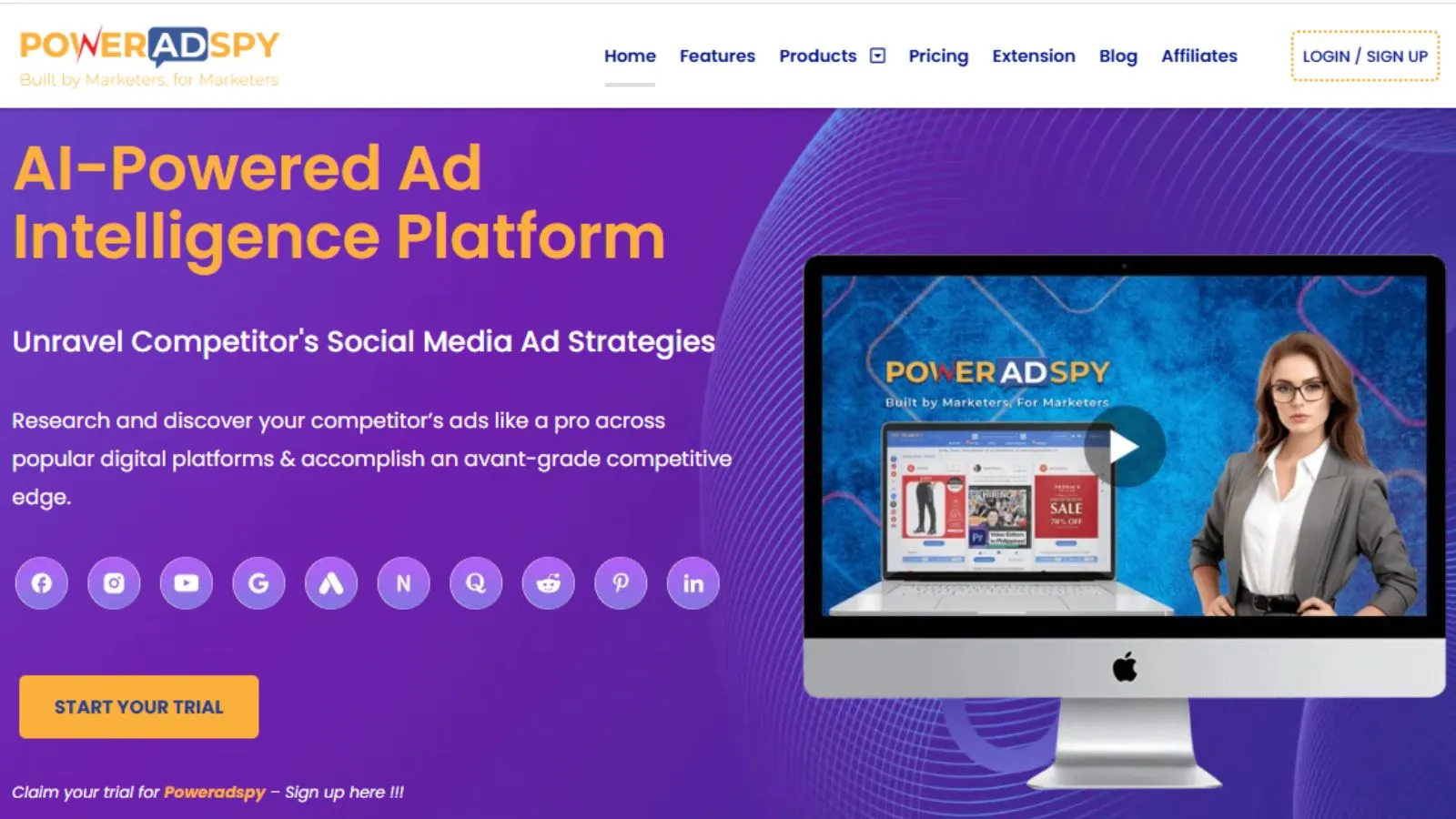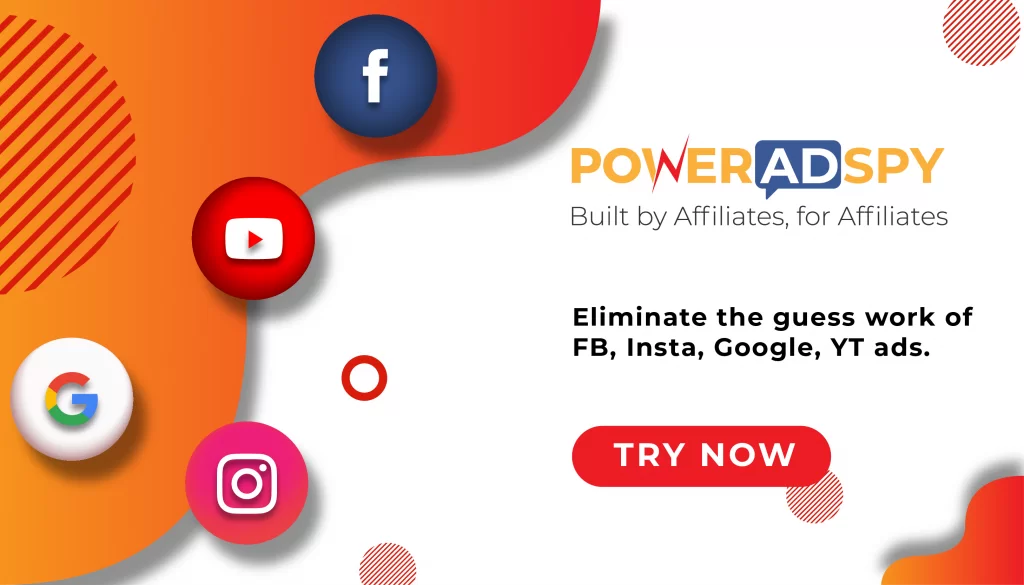How to Overcome Creative Fatigue: 7 Proven Strategies
Creative fatigue is silently sabotaging the success of countless marketers, designers, and content creators worldwide.
If you’ve ever stared at a blank canvas, struggled to develop fresh campaign ideas, or felt mentally drained after producing content, you’re experiencing this all-too-common phenomenon.
In this fast-paced digital landscape, the pressure to consistently produce engaging content has never been higher.
Whether you’re managing social media campaigns, designing advertisements, or creating marketing materials, creative fatigue can strike anyone at any time.
This comprehensive guide will equip you with seven proven strategies to overcome this challenge and reignite your creative spark.
Listen Podcast Now!
What Is Creative Fatigue?
Creative fatigue occurs when your mind becomes overwhelmed by the constant demand for original ideas and innovative solutions.
It’s that mental exhaustion you feel when your creative well seems to have run dry.
Unlike regular tiredness, creative fatigue specifically affects your ability to generate fresh concepts and think outside the box.
This condition manifests differently for everyone. Some people experience it as complete creative blocks, while others notice a decline in the quality of their ideas.
The symptoms can include procrastination, increased frustration with creative tasks, and a tendency to rely on previously successful concepts rather than exploring new territories.
Creative fatigue doesn’t discriminate; it affects seasoned professionals and newcomers alike.
Understanding its nature is the first step toward developing effective coping mechanisms and prevention strategies.
Understanding Creative Fatigue in Digital Marketing:
Digital marketers face unique challenges when dealing with creative fatigue.
The constant need to produce engaging content across multiple platforms can quickly drain even the most imaginative minds.
Social media managers, in particular, struggle with this issue as they simultaneously juggle various content formats, audiences, and brand voices.
Ad Fatigue represents a specific subset of this broader problem, occurring when audiences become tired of seeing the same advertisements repeatedly.
When users encounter identical ads across their feeds, engagement rates plummet, and campaign performance suffers significantly.
This phenomenon forces marketers to constantly refresh their creative assets, adding pressure to an already demanding workflow.
The relationship between creator burnout and audience disengagement creates a vicious cycle.
As marketers experience creative fatigue, they may resort to repetitive content strategies, inadvertently contributing to ad fatigue among their target audiences.
Breaking this cycle requires strategic planning and fresh approaches to content creation.
The Psychology Behind Creative Blocks:
Understanding the psychological mechanisms behind creative fatigue can help you develop more effective solutions.
Your brain operates like a muscle; constant use without proper rest leads to exhaustion.
When you repeatedly engage the same neural pathways associated with creative thinking, they become less efficient over time.
Stress hormones like cortisol can significantly impact creative performance.
When you’re under pressure to produce innovative ideas consistently, your body may enter a state of chronic stress, inhibiting the relaxed mental state necessary for creativity.
This biological response explains why creative fatigue often feels overwhelming and difficult to overcome through willpower alone.
Additionally, perfectionism and fear of failure can contribute to creative blocks.
When you’re overly concerned about producing flawless work, your mind may shut down rather than risk creating something subpar.
Recognizing these psychological patterns allows you to address the root causes of creative fatigue rather than just its symptoms.
Strategy 1: Implement Strategic Breaks and Mental Resets:
The most fundamental approach to combating creative fatigue involves incorporating regular breaks into your workflow.
These aren’t just casual coffee breaks; they’re strategic mental resets designed to refresh your cognitive resources.
Research shows that brief periods of mental downtime can significantly improve creative problem-solving abilities.
Try the Pomodoro Technique with a creative twist: work for 25 minutes, then take a 5-minute break where you completely disconnect from your project.
During these breaks, engage in activities that activate different parts of your brain – take a walk, listen to music, or practice deep breathing exercises.
Longer strategic breaks are equally important. Schedule regular “creative sabbaticals” periods of several hours or even days, where you step away from your usual creative work.
Use this time for activities that inspire you without demanding creative output: visit museums, read fiction, or explore new neighborhoods.
The key is consistency. Make these breaks non-negotiable parts of your schedule rather than luxury add-ons.
Your brain needs this downtime to process information, form new connections, and prepare for the next creative challenge.
Strategy 2: Diversify Your Creative Input Sources:
Creative fatigue often stems from consuming the same types of inspiration repeatedly.
When you draw from limited sources, your ideas begin to feel recycled and uninspired.
Expanding your input sources can dramatically improve your creative output quality and reduce the likelihood of experiencing mental blocks.
Create a systematic approach to inspiration gathering. Follow creators from different industries, cultures, and artistic mediums.
If you typically focus on digital marketing content, explore fashion photography, architecture, or music production.
These seemingly unrelated fields can provide unexpected insights for your own work.
Establish “inspiration hunting” sessions where you deliberately seek out unfamiliar content.
Browse international websites, visit local galleries, attend workshops outside your expertise area, or engage with communities you wouldn’t normally interact with.
Document interesting concepts, color palettes, storytelling techniques, or design approaches that catch your attention.
The goal isn’t to copy these ideas directly but to allow them to marinate in your subconscious.
Often, the most innovative solutions emerge when diverse influences combine in unexpected ways, helping you overcome creative fatigue through fresh perspectives.
Strategy 3: Develop a Creative Routine and Environment:
Consistency in your creative process can help combat creative fatigue by reducing decision-making overhead and creating optimal conditions for inspiration.
Develop rituals that signal to your brain it’s time for creative work, similar to how athletes use pre-game routines to enter peak performance states.
Design your physical environment to support creativity.
This doesn’t require expensive renovations; simple changes like adjusting lighting, adding plants, or organizing your workspace can significantly impact your mental state.
Some people thrive in organized, minimalist spaces, while others prefer controlled chaos with visual stimuli everywhere.
Establish consistent timing for your most demanding creative work. Many people experience peak creative energy at specific times of day.
Identify your optimal hours and protect them fiercely. Use less demanding tasks to fill lower-energy periods, reserving your prime time for breakthrough thinking.
Consider creating different environments for different types of creative work.
Use one space for brainstorming, another for execution, and perhaps a third for review and refinement.
These physical transitions can help your brain shift between different creative modes more effectively.
Strategy 4: Collaborate and Seek External Perspectives:
Isolation often intensifies creative fatigue. When you’re stuck in your own head, problems can feel insurmountable, and solutions may seem elusive.
Collaboration introduces fresh viewpoints and can spark ideas you’d never generate alone.
Even brief conversations with colleagues can provide the mental shift needed to overcome creative blocks.
Organize regular brainstorming sessions with team members from different departments or backgrounds.
The marketing team might collaborate with customer service representatives who hear client feedback daily, or designers might work with sales professionals who understand customer pain points intimately.
Consider forming or joining creative accountability groups.
These informal networks provide support, feedback, and motivation when creative fatigue strikes.
Members can share resources, offer constructive criticism, and celebrate each other’s successes, creating a supportive ecosystem for creative growth.
Don’t underestimate the value of casual conversations with people outside your industry.
Friends, family members, or strangers you meet in everyday situations often provide surprisingly valuable insights because they approach problems without industry biases or preconceived limitations.
Strategy 5: Master the Art of Creative Constraints:
Paradoxically, imposing limitations on your creative process can help overcome creative fatigue. When faced with infinite possibilities, your brain can become paralyzed by choice.
Strategic constraints force you to think more creatively within defined parameters, often leading to more innovative solutions than unlimited freedom would provide.
Try setting arbitrary limitations for your next project: use only three colors, write headlines under ten words, or design using geometric shapes exclusively.
These artificial boundaries push you to explore solutions you might otherwise overlook, helping combat the mental exhaustion associated with creative fatigue.
Time constraints can be particularly effective. Give yourself shorter deadlines than usual, forcing rapid ideation and preventing overthinking.
The pressure can stimulate creative problem-solving and help you bypass the perfectionism that often contributes to creative blocks.
Budget constraints work similarly. Imagining you have half the usual resources available often leads to more resourceful, creative approaches.
This exercise helps you focus on core concepts rather than relying on expensive effects or elaborate executions to carry your ideas.
Strategy 6: Leverage Technology and Creative Tools:
Modern technology offers numerous solutions for overcoming creative fatigue.
From AI-powered idea generators to sophisticated analytics platforms, digital tools can provide the spark needed to reignite your creative fire.
However, the key is using these tools as inspiration sources rather than a replacement for human creativity.
Mood board applications, color palette generators, and design inspiration platforms can help jumpstart your creative process when you’re feeling stuck.
These tools aggregate vast amounts of creative content, helping you discover new trends and approaches you might have missed otherwise.
Data analytics tools can reveal insights about audience preferences and behavior patterns that inform your creative decisions.
Understanding what resonates with your target audience can help focus your creative energy on concepts more likely to succeed, reducing the frustration associated with creative fatigue.
Also Read:
What Causes Ad Fatigue & How to Fix It Quickly?
Advertising Tracking Explained: How To Do It Effectively?
Strategy 7: Practice Creative Cross-Training:
Just as athletes cross-train to improve performance and prevent injury, creative professionals should engage in diverse activities to combat creative fatigue.
This approach exercises different creative muscles and prevents over-reliance on familiar thinking patterns.
If you’re primarily a visual creator, experiment with writing. Writers might try sketching or photography.
Digital marketers could explore traditional art forms like painting or sculpture.
The specific activity matters less than engaging creativity in unfamiliar territory.
Set aside weekly time for “creative play” – activities with no pressure or professional expectations.
This might involve doodling while listening to podcasts, writing poetry about mundane topics, or creating photo collages from magazine clippings.
Consider taking classes in completely different creative fields.
Learning new skills challenges your brain differently and often provides unexpected insights applicable to your primary work.
Document your cross-training experiences and note transferable insights; seemingly unrelated activities often solve problems you’ve struggled with professionally.
Moreover, even as an advertiser, if you are facing creative fatigue, the best way to overcome that is through ad intelligence. Based on the successful ad creations of other advertisers, you may even come up with some great creative ideas for your own ad campaigns. Especially if you are running Facebook ads, creative fatigue is just another challenge that every Facebook advertiser encounters, but it’s entirely manageable with the right approach.
Tapping into ad intelligence tools like PowerAdSpy, you can study successful campaigns, uncover what resonates with audiences, and transform those insights into fresh, original creative ideas for your own ads.
Rather than recycling the same visuals or messages, this data-driven approach lets you continually refresh your campaigns, keeping them engaging, relevant, and optimized for higher conversions — effectively beating Facebook ad creative fatigue before it affects your results.
Is PowerAdSpy the Ultimate Solution to Facebook Creative Fatigue?
Creative fatigue on Facebook can quietly drain your ad performance, no matter how great your campaigns initially look.
When audiences start scrolling past familiar visuals and messaging, your ROI begins to dip. That’s where PowerAdSpy becomes your secret weapon.
Here’s how PowerAdSpy helps you overcome Facebook creative fatigue effectively:
- Discover What’s Already Working:
PowerAdSpy gives you access to a massive database of high-performing Facebook ads from across industries. You can analyze real, successful campaigns to see what’s trending and how top brands keep their creatives fresh. - Identify Winning Patterns Early:
By filtering ads based on engagement levels, audience type, and locations, you can spot emerging creative trends before they become oversaturated — ensuring your campaigns stay one step ahead. - Get Inspiration, Not Imitation:
Instead of starting from scratch, PowerAdSpy lets you draw inspiration from proven ad copies, visuals, and CTAs. This helps you design fresh, engaging creatives while staying true to your brand voice. - Analyze Ad Longevity:
The platform shows how long successful ads have been running — a key insight into what keeps audiences engaged over time and what causes fatigue to set in. - Optimize Creative Strategy:
With these insights, you can refine your ad rotation, experiment with new formats, and plan more sustainable creative cycles that continuously engage your audience.
Conclusion:
Overcoming creative fatigue requires combining rest, strategic planning, and continuous learning.
The seven strategies outlined – strategic breaks, diversifying input sources, creative routines, collaboration, creative constraints, leveraging technology, and cross-training- provide a comprehensive framework for maintaining creative health.
Remember that creative fatigue is a natural response to demanding work, not a personal failing.
Treat your creativity as a renewable resource requiring proper nourishment through diverse experiences, adequate rest, and strategic challenges.
Start implementing these strategies today, beginning with those that resonate most with your situation.
Your future creative self will thank you for investing in sustainable practices that prevent creative fatigue.
FAQ’s:
Q1: How long does creative fatigue typically last?
A: Creative fatigue duration varies based on workload and recovery strategies. With proper rest, most people improve within days to two weeks.
Q2: Can creative fatigue be prevented entirely?
A: Complete prevention isn’t possible, but regular self-care, diverse inspiration sources, and workload management significantly reduce creative fatigue frequency and severity.
Q3: Is creative fatigue the same as burnout?
A: Creative fatigue specifically affects creative thinking, while burnout encompasses broader emotional and physical exhaustion across all life areas.
Q4: Should I force myself to create when experiencing creative fatigue?
A: No. Forcing creativity during creative fatigue produces poor results and worsens the condition. Focus on recovery activities instead.
Q5: How can I tell if my audience is experiencing ad fatigue?
A: Ad fatigue signs include declining click-through rates, increased costs, reduced engagement, and negative feedback. Monitor performance regularly.

